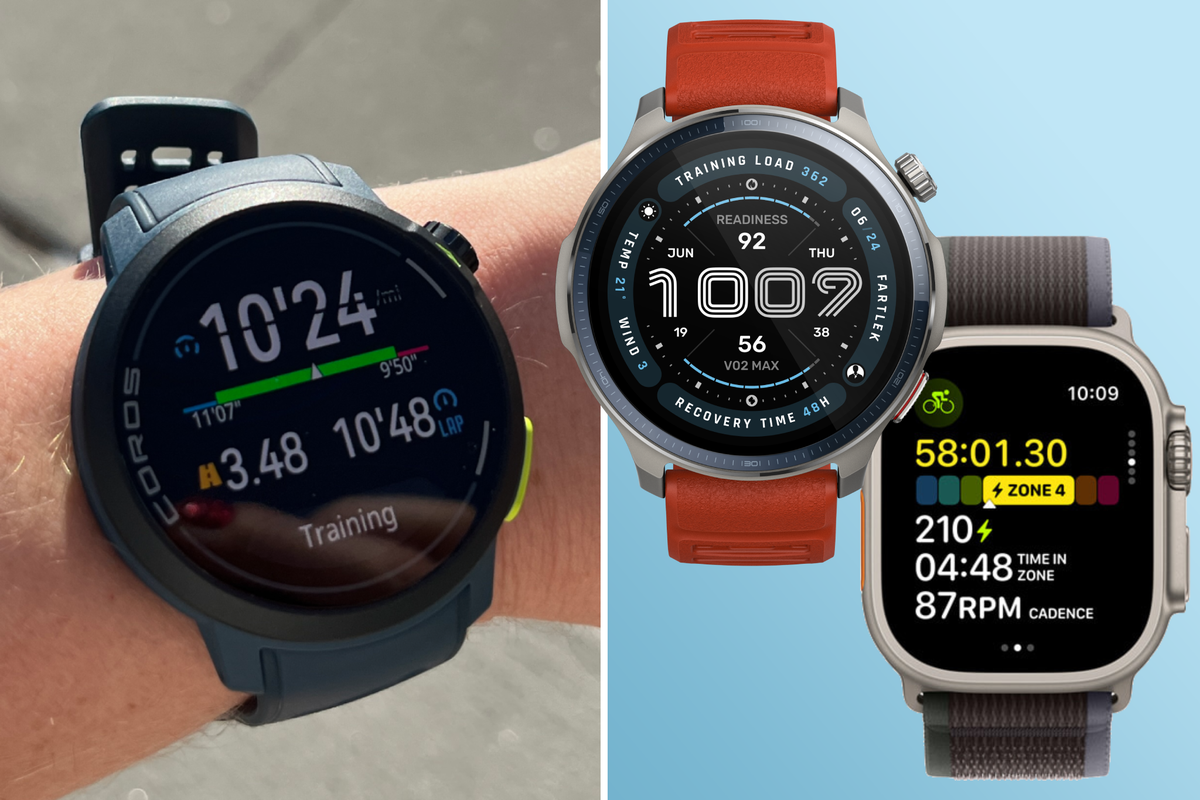
There’s nothing wrong with just huffing and puffing away at the gym. But when you’re ready to get more strategic about your workouts, you’re going to want one of the best fitness trackers. “Having the data gives you deeper insights into what's actually going on — your effort, your strain over time, your progress,” says Kendall Wood, a fitness coach at Tonal. “And that can help you make more informed decisions about your training.”
There are tons of trackers out there, some of which can set you back almost as much as a month’s rent. So what do you actually need in a good one? Well, that depends on whether you want all the bells and whistles of a device you wear 24/7 to show the full gamut of exercise, stress, and sleep stats, or if you’re only after the basics, says Wood. If the latter, she suggests something with a good heart rate monitor.
You should also consider whether you want a tracker with an interface that gives you real-time feedback during your workouts or a screen-free option where you simply check your stats in an app later on. Similarly, I’d recommend considering cost — whether that’s upfront or an ongoing subscription.
As a fitness writer and certified running coach who’s tried just about every fitness tracker over the years, I’m here to guide you on the favorite options among pro athletes, budget-minded beginners, and the rest (who fall somewhere in between). No matter your own fitness style and goals, get ready to meet your new favorite workout buddy.
How I tested
To find today’s best fitness trackers, I interviewed experts and researched which options have the largest cult followings among trainers, athletes, and everyday gymgoers. I then tried each one out to see firsthand how they actually perform.
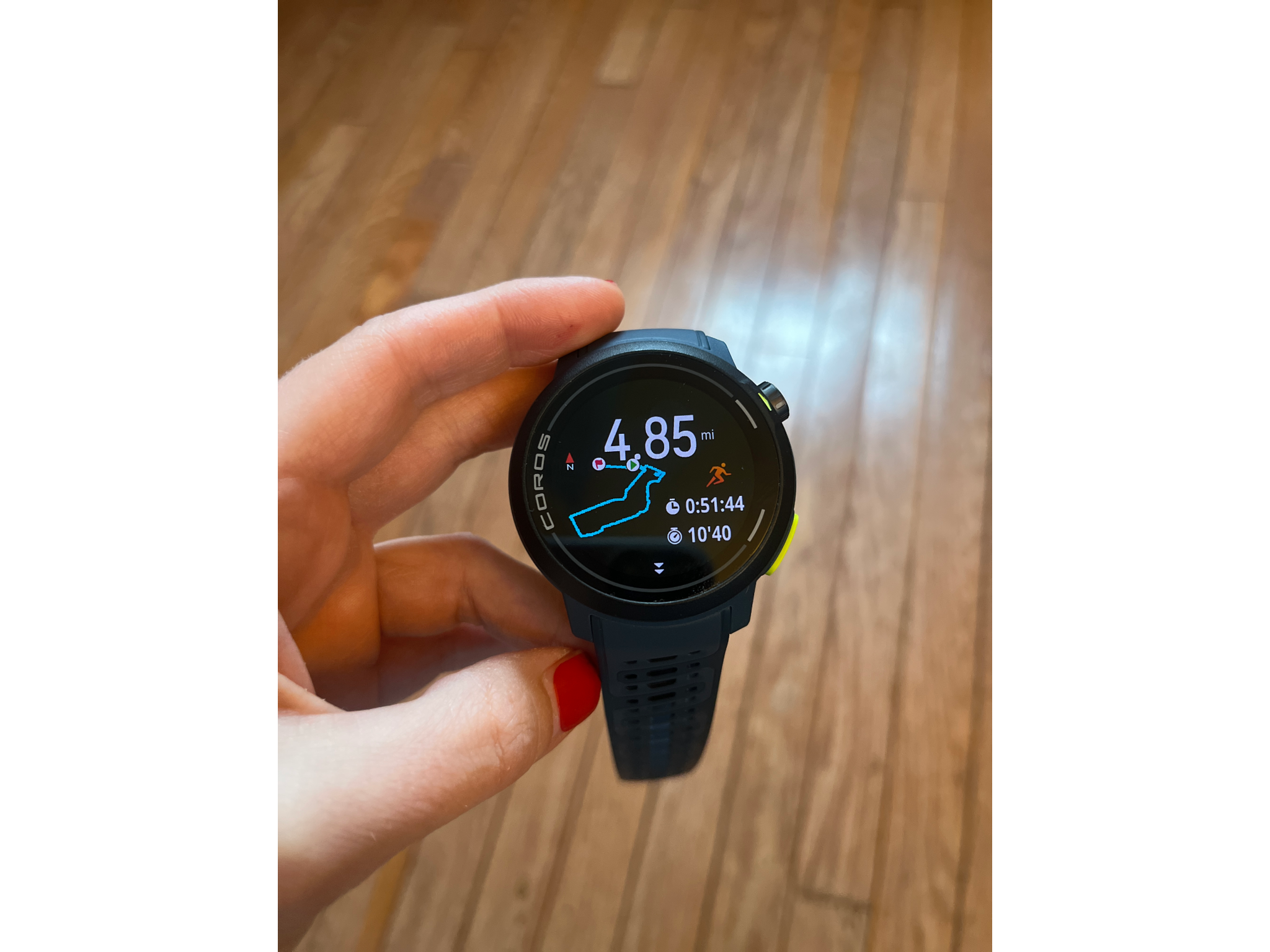
I wore each for 24/7 for at least two weeks (and kept some personal favorites I’ve had for multiple months) to test everything they could track, from workouts and step counts to health stats like my resting heart rate and overnight sleep metrics (the latter, I’ve done extensive research on for my review of the best sleep trackers).
I tracked runs, walks, hikes, bike rides, strength training, Pilates, barre, and paddleboarding workouts, as well as day-to-day life, assessing the metrics each tracker provided me with. I assessed the following:
- Wearability: A fitness tracker is designed to be worn 24/7, so I paid close attention to how comfortable it was, whether I noticed it on my wrist, and how user-friendly the device itself was (as well as the connecting app).
- Battery life: I compared the real-world battery life and charging time with what the brand claimed.
- Health and fitness insights: A fitness tracker should provide insights that are relevant to you. It should track a host of different activities, from paddleboarding and swims to golf and walks. I assessed how easily digestible the data was and whether it could be accessed on the device itself or if it required me to use my phone. Similarly, I paid close attention to how well the devices stored data and their syncing capabilities.
- Accuracy of metrics: Beyond the actual activity tracking, I considered how well each wearable tracked different activities. I conducted this test by wearing at least two trackers at once. After all, there’s not too much point in having a fitness tracker if it’s not really reflecting an accurate reading. We get the best data and recommendations when our trackers are picking up on the true reflections of our overall health, sleep, and fitness routines.
- Additional features: I also assessed whether they had additional nice-to-have features and how well these performed, such as the accuracy of the GPS tracking, the personalized workouts, and whether it could auto-detect activities.
Why you can trust IndyBest U.S. reviews
Jennifer Heimlich has more than a decade of experience as a journalist within the fitness industry, so she is a reliable and knowledgeable voice when it comes to recommendations. When not writing, she’s a UESCA-certified running coach and hosts running tours, so she takes health and fitness seriously. And she has been able to put these fitness trackers to the test in a whole host of scenarios. Beyond her own research and rigorous testing, she’s consulted experts on what to look out for in the best fitness trackers to broaden her knowledge.
The best fitness trackers for 2025 are:
- Best overall — Garmin forerunner 265: $449.99, Walmart.com
- Best budget fitness tracker — Fitbit charge 6: $159.95, Google.com
- Best screen-free fitness tracker — Whoop 5.0: $199, Whoop.com
- Best for endurance athletes — Coros pace pro: $349, Coros.com
- Best for outdoor enthusiasts — Apple Watch ultra 2: $799, Apple.com
- Best multi-sport fitness tracker — Amazfit balance 2: $299, Amazfit.com
- Best for all-around wellness — Garmin venu 3: $449.99, Garmin.com
Garmin forerunner 265
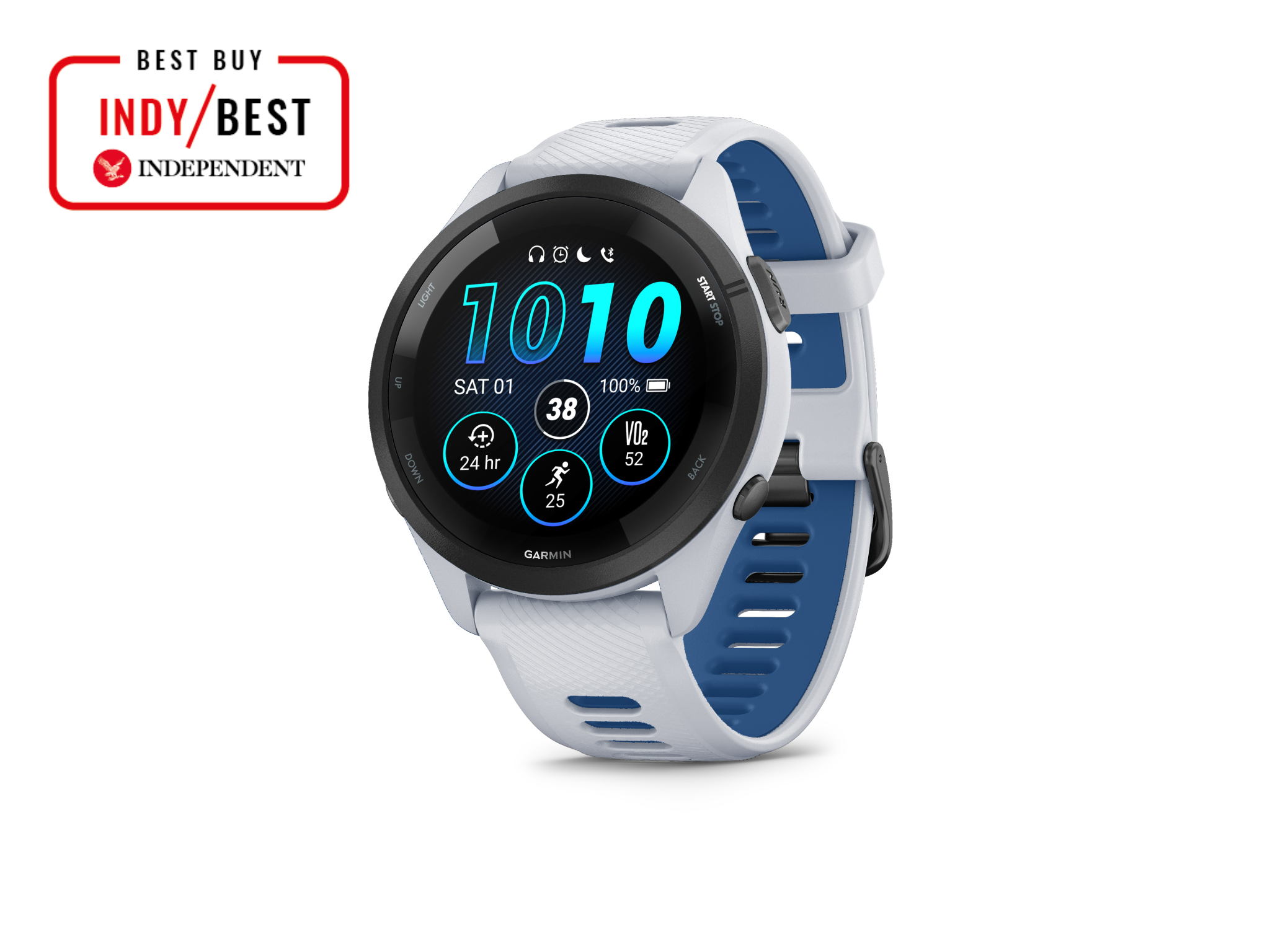
Best: Fitness tracker overall
Size: 41.7mm x 41.7mm x 12.9mm or 46.1mm x 46.1mm x 12.9mm
Weight: 39g or 47g
Battery life: Up to 15 days
Charging time: Up to 2 hours
Water resistance: 5 ATM (swimming)
Colors: Blue, black, gray, light pink, gray and green, gray and blue
Heart rate monitor: Yes
Sleep tracking: Yes
Why we love it
- Personalized daily workouts sync right to your watch
- Bright display
- Available in smaller 42 mm size
- Long battery life
- Offline music capabilities
- Allows contacts to track your location
- Touchscreen disabled during workouts to prevent accidental presses
Take note
- No maps/navigation without a subscription
- Sleep tracking not always accurate
- Takes a while to get GPS at times
Several serious runners and coaches recommended Garmin’s forerunner 265, and it did not disappoint — so it’s no surprise that I found it to be the best fitness tracker.
Sure, you get some general smartwatch features, including contactless payment, phone-free music, and text notifications. But this is really an athlete’s watch. For about half the price of Garmin’s highest-end watches, you get pretty much everything you need to train seriously — for example, highly accurate GPS tracking and personalized training plans with daily workout suggestions based on how well your recent sessions have gone and how your body is recovering from them.
The bright, easy-to-read screen provided me with all the stats I needed and then some, namely a VO2 max estimate and a real-time assessment of how my body was handling each workout compared to usual. I was even able to follow along to animated strength and yoga workouts.
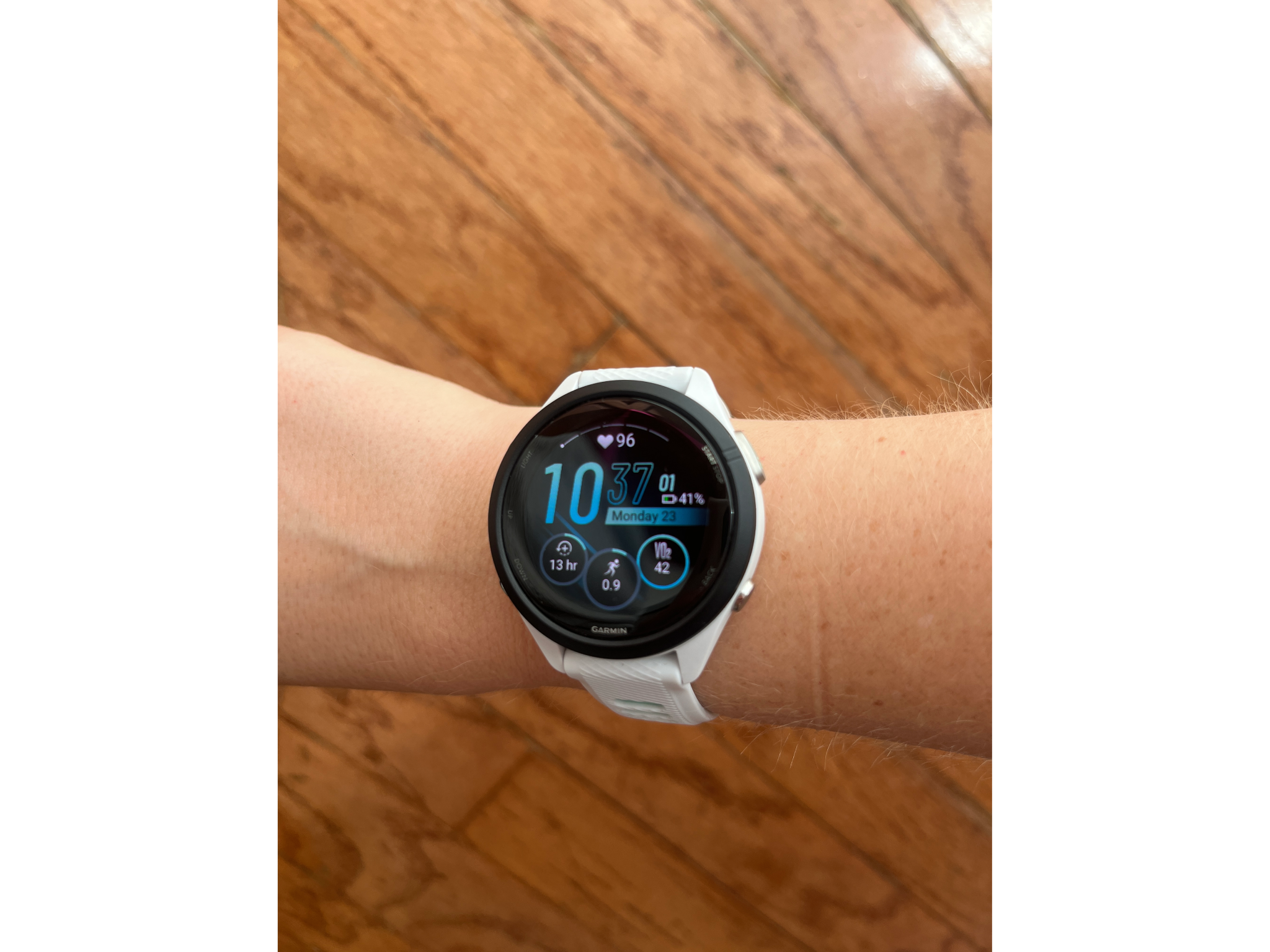
The only major thing missing is maps and navigation — but, should you need it, you can access trail maps using Garmin connect+ ($69.99/year) or outdoor maps+ ($49.99/year) if you subscribe. If that’s a priority for you and you don’t want to spring for a subscription, I’d recommend the Coros pace pro (more on that below) instead.
My other gripe is that the sleep tracking didn’t perform as well as other sleep trackers I’ve tested. For instance, one night, it recorded my middle-of-the-night reading in bed as REM sleep.
That said, it’s a great all-rounder. And, as someone with a small wrist, I love that the forerunner 265 comes in two sizes, including a smaller 42mm option, which I found to be super comfortable. Even though the aesthetic is decidedly sporty, it doesn’t look out of place at a nice dinner or in the office.
Buy now £449.99, Walmart.com
Fitbit charge 6
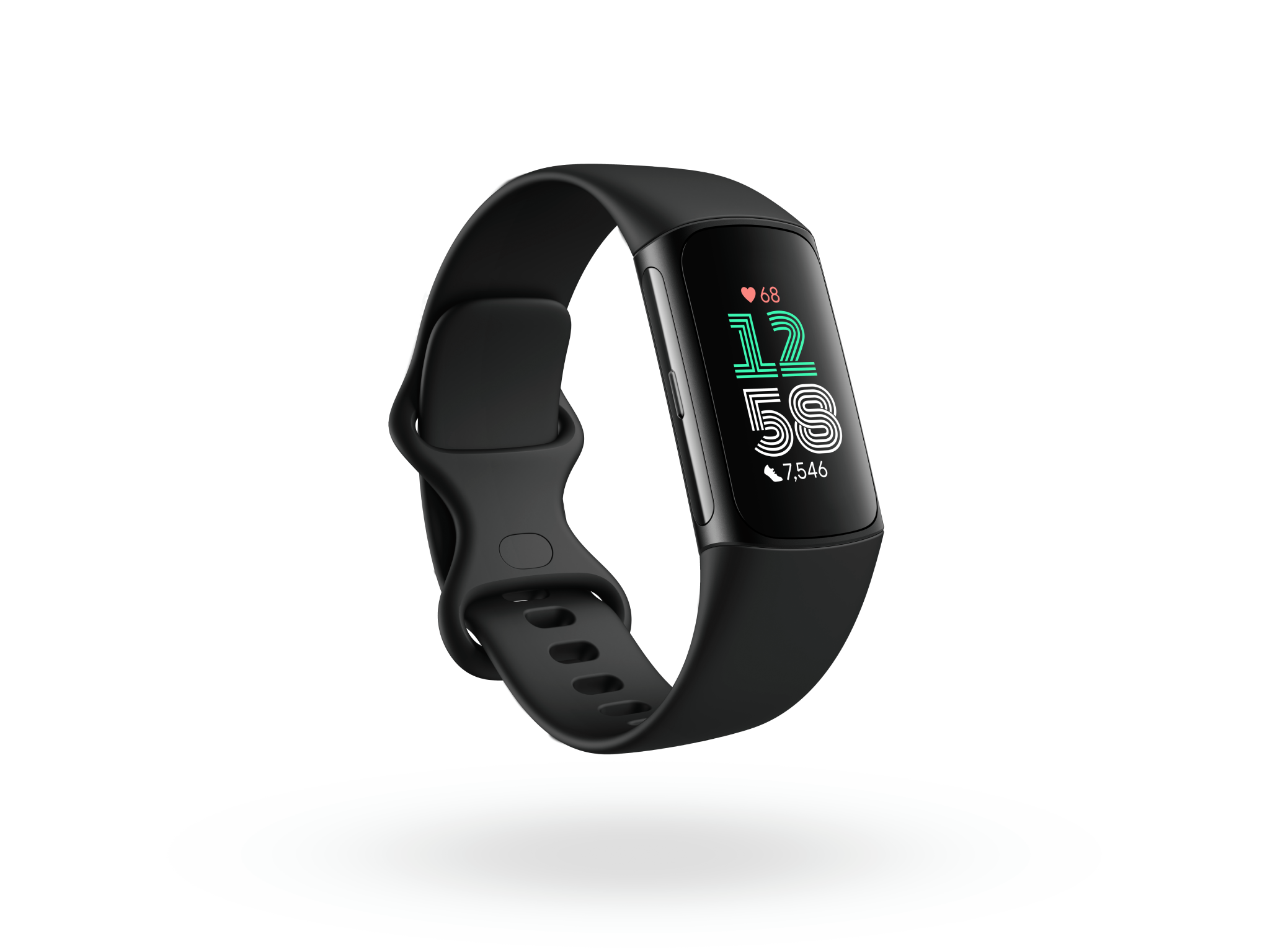
Best: Budget fitness tracker
Size: 36.73mm x 23.09mm x 11.2mm
Weight: 30g
Battery life: Up to 7 days
Charging time: 2 hours
Water resistance: 5 ATM (swimming)
Colors: Black, coral, silver
Heart rate monitor: Yes
Sleep tracker: Yes
Why we love it
- Easy-to-navigate screen and app
- Good value
- Customizable hourly move alerts
- Helpful “active zone” intensity tracking
- Comes with 6 free months of Fitbit premium for free workouts
- Google Maps directions
- Pay with Google wallet
Take note
- Small screen doesn’t show many workout stats at once
- Screen doesn’t always show up when you lift your wrist
- Band isn’t very breathable (and can’t be swapped out)
Not everyone’s looking for a fitness tracker to help them train for an Ironman. Sometimes, you just want the basics at a good price. And if that’s what you’re looking for, the Fitbit charge 6 is the best budget fitness tracker.
This beginner-friendly band tracks heart rate, distance, and steps, plus “active zone” minutes, which helpfully give you bonus points for when your exercise dips into “vigorous” rather than “moderate” intensity, so you know exactly how you’re stacking up to the recommendations in the government’s Physical Activity Guidelines.
.png)
The screen is small, so you can’t see all the metrics easily during workouts. Serious runners or cyclists might want to invest in more mid-range options, such as the Coros pace pro or Amazfit balance 2. But the hourly move alerts on the Fitbit charge are the most motivating I’ve ever encountered — they give you a clearly defined target step count and show how close you are to meeting it.
Buy now £111.04, Walmart.com
Whoop 5.0

Best: Screen-free fitness tracker
Size: 34.7mm x 24mm x 10.6mm
Weight: 26.5g
Battery life: 14-plus days
Charging time: 110 to 152 minutes
Water resistance: Up to 10 meters (swimming)
Colors: 30+ options
Heart rate monitor: Yes
Sleep tracker: Yes
Why we love it
- Top-notch sleep tracking
- Can detect early signs of illness
- Tracks stress levels throughout the day
- Makes it easy to see how habitual patterns affect recovery
- Explains science behind measurements like HRV
- Long battery life
- Can be worn in snug-fitting apparel like sports bras or shorts
Take note
- Requires a subscription
- No screen to show real-time workout stats
New York City-based [solidcore] head coach Juan Zapata says he used to track his workouts with his Apple Watch, but he found the screen too distracting, so he’s switched to the screen-free Whoop. And, like many users, he’s found it’s given him a more holistic approach to his days — he can just check the app once in the morning, see where his stress levels were the day before, then log a meditation or breathwork. “I've been more diligent and more intentional about practicing mindfulness,” he says.
The Independent’s fitness and wellbeing editor, Emilie Lavinia, also swears by the Whoop 5.0 for its health and wellbeing insights. In her in-depth Whoop 5.0 review, she wrote: “The Whoop is the best health coach you’ll find outside of a human being, and it’s incredibly smart with the way it uses biometric data. The 5.0 is also lightweight and stylish and has exceptional battery life. It offers a sizeable upgrade from the 4.0, and you can go even bigger with features if you want to pay a little extra annually.”
.png)
“If you have any health goals and the financial commitment is one you can make — Whoop peak works out at less than $20 a month — I’d say the investment in the 5.0 is a no-brainer. During my testing period, my sleep, VO2 max, and daily step count improved, and I got a better sense of how my body was responding to stress and exercise,” she added.
The lack of a screen makes Whoop 5.0 far different from traditional fitness trackers, since you can’t monitor your data, such as pace or heart rate, during a workout. But many athletes swear by the best-in-class recovery metrics that let you easily see what kind of training will serve you best each day, and what kinds of habits (think: alcohol or late screen time) affect how prepared you are — or not — to take on a tough session. Personally, I like the combination of a Whoop as my wear-all-the-time overall health tracker, then a Coros pace pro for workouts — that way I get the best of both worlds. But the Whoop 5.0 on its own is a reliable health tracker that can track almost anything you ask it to.
Read the full Whoop 5.0 review now
Buy now £199.00, Whoop.com
Coros pace pro
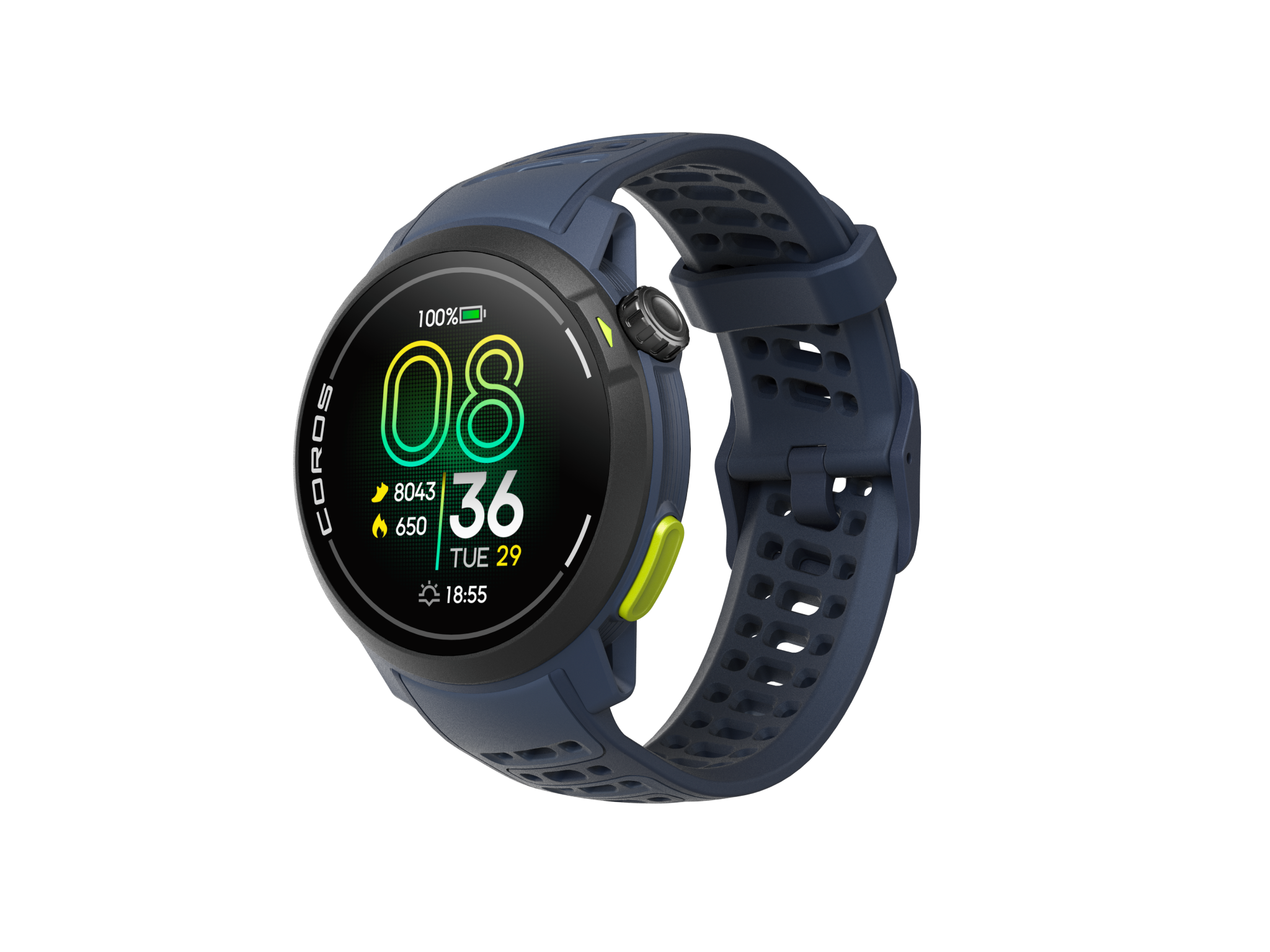
Best: Fitness tracker for endurance athletes
Size: 46mm x 46mm x 12.25 mm
Weight: 37g (with nylon band) or 47g (with silicone band)
Battery life: 20 days
Charging time: Less than 2 hours
Water resistance: 5 ATM (swimming)
Colors: Black, gray, blue
Heart rate monitor: Yes
Sleep tracker: Yes
Why we love it
- Offline maps with turn-by-turn navigation
- Less expensive than comparable options
- Long battery life
- Easy-to-create workouts
- Quick, precise GPS
- Access to expert-designed training plans that sync to the watch
Take note
- Unreliable sleep tracking
- On the larger side
- Plays downloaded MP3s, but not Spotify playlists or podcasts
- No contactless payments
With enough battery life to last you through most ultramarathons, plus precise dual-frequency GPS, the Coros pace pro tracker is an endurance athlete’s dream. And it comes at a reasonable, mid-range price, considering that many of its features — such as coach-designed training plans and turn-by-turn navigation — are typically only found in more premium smartwatches.
I found it easy to check the face for all the standard stats, including cadence, stride length, and power, as well as estimates of how each workout affects your aerobic and anaerobic fitness. One place this watch really shines, though, is the GPS. The pace pro connected within two to six seconds, and even when I take it on loops around buildings (which tends to cause issues with other GPS watches I’ve tested), my maps don’t show more than a couple of feet of deviation.
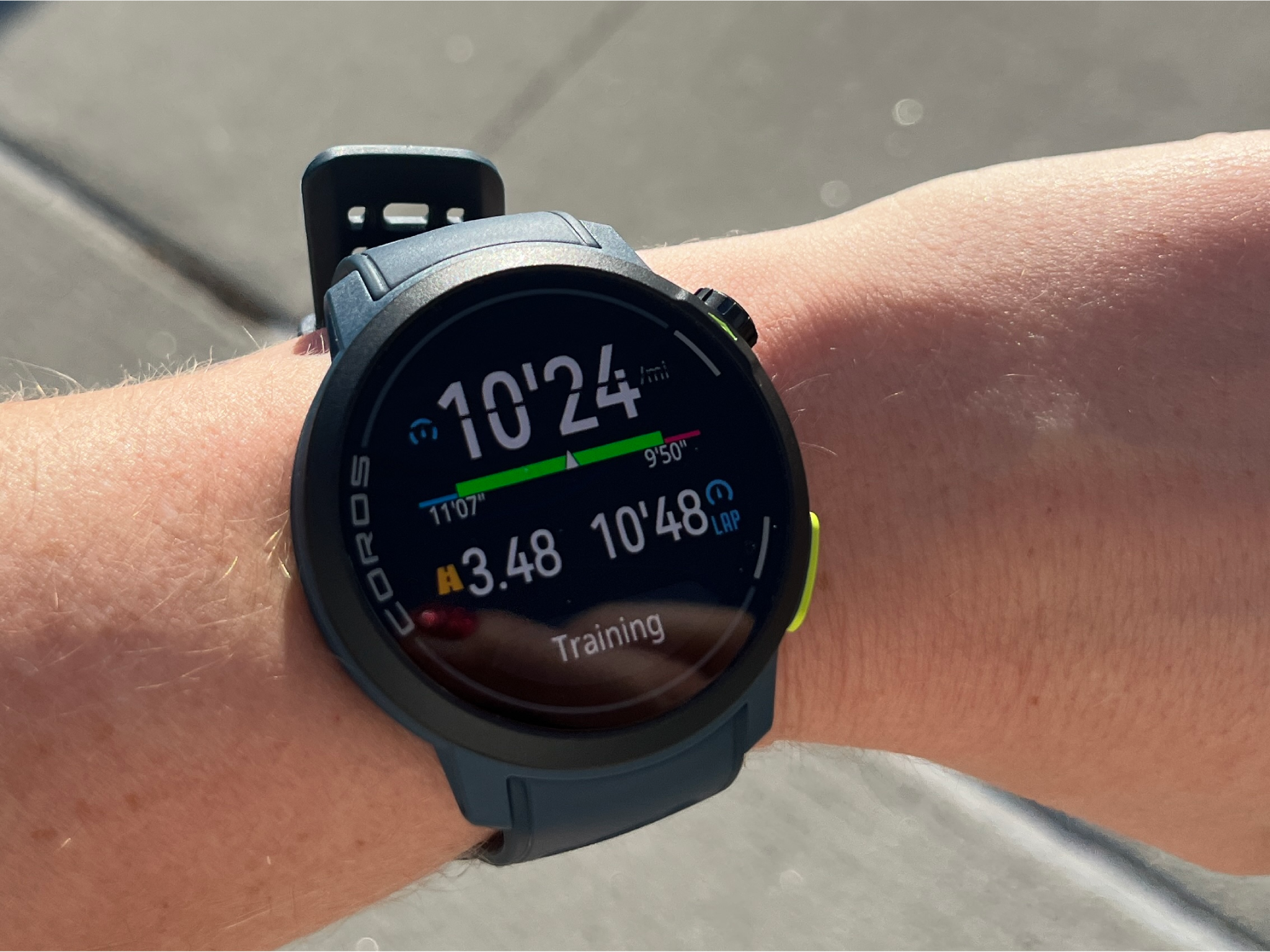
Much like the Garmin forerunner 265, the Coros pace pro would benefit from improved sleep tracking — it often counted my Instagram scrolling in bed as “light sleep”. If tracking sleep data is essential for you, I’d invest in a Whoop 5.0 instead (or in addition) for far more accurate metrics.
Buy now £349.00, Coros.com
Apple Watch ultra 2

Best: Fitness tracker for outdoor enthusiasts
Size: 49mm x 44mm x 14.4mm
Weight: 61.4g
Battery life: Up to 36 hours
Charging time: About 90 minutes
Water resistance: Diving to 40 meters and high-speed water sports
Colors: Natural or black finish, 11 band colors
Heart rate monitor: Yes
Sleep tracker: Yes
Why we love it
- Capable of diving and high-speed water sports
- Highest level of dust protection
- Shows a ton of workout stats at once
- Accurate, fast GPS
- Tons of all-around smartwatch features
- State-of-the-art health tracking
- Bright display is easily seen in direct sunlight
Take note
- Expensive
- Large and heavy
- Short battery life
It’s hard to break the Apple Watch ultra 2. Designed to function as a dive computer down to 40m, it’s also water resistant enough to go windsurfing, and it’s got the highest dust-proof rating available. I also mistakenly put it through the ultimate scratch test by letting my toddler drop it — fortunately, it survived just fine.
.png)
Even during workouts like cycling, it was easy to see most stats at a glance, and the GPS was both spot-on and never made me wait to start a workout. I also appreciated that it auto-detects things like whether you’re at a track, or when you’ve transitioned from swimming to biking to running during triathlons.
The tradeoff is that it’s large and heavy, unlike the more comfortable Garmin forerunner 265. And it requires almost daily charging. But in addition to being adventure-ready, the ultra 2 also gives you access to Apple’s state-of-the-art health tracking, with unique features like estimated hours spent in daylight, loud noise detection, and Apple’s famous activity rings, which are surprisingly motivating.
Buy now £799.00, Apple.com
Amazfit balance 2
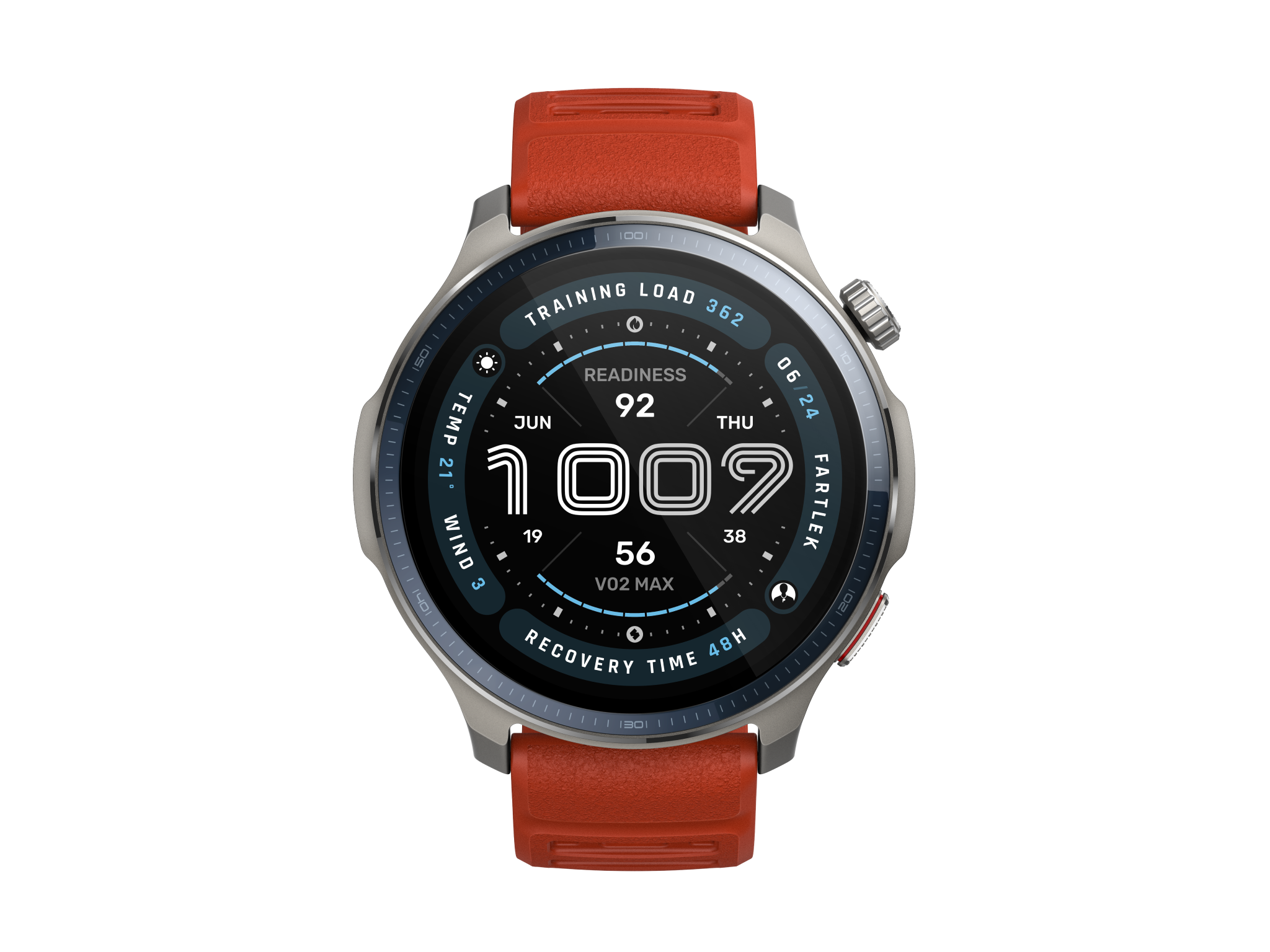
Best: Multi-sport fitness tracker
Size: 47.4mm x 47.4mm x 12.3mm
Weight: 43g
Battery life: Up to 21 days
Charging time: About 2 hours
Water resistance: 10 ATM (diving)
Colors: Comes with black and red strap
Heart rate monitor: Yes
Sleep tracker: Yes
Why we love it
- More than 170 workout modes
- Long battery life
- Gives a helpful 'biocharge' estimate based on rest vs exertion and stress levels
- Capable of diving down to 45 meters
- Downloadable maps with turn-by-turn directions
- Less expensive than comparable fitness watches
- Finds GPS quickly
- Responsive auto-detection of workouts
Take note
- AI suggestions aren't always accurate
- Data in the app can be hard to make sense of
- On the large side
Amazfit is mainly known for its budget smartwatches, and at $299, the new balance 2 is its priciest option. But when you look at comparable fitness trackers, it’s still a surprisingly great bang for your buck, given the features offered. For starters, it features a whopping 170 different workout modes. It’s capable of scuba diving down to 45m (five meters deeper than the Apple Watch ultra 2). You can also download golf course and ski resort maps right to your wrist. And I found it’s faster than my Garmin watches at picking up GPS, and just as accurate.
I also liked how responsive it was at auto-detecting activities like walking — something I don’t think to track unless my watch is doing it for me, but I found it helps to give me a better overall picture of my activity levels.
.png)
What’s the catch? While the app provides different stats, including sleep and recovery metrics, they can be difficult to understand. And the AI insights and coaching don’t always work: It told me to stick to low-intensity exercise every day, even when I had a high recovery score. So it’s on you (and maybe Google) to get a handle on what the data’s really telling you.
Buy now £299.00, Walmart.com
Garmin venu 3
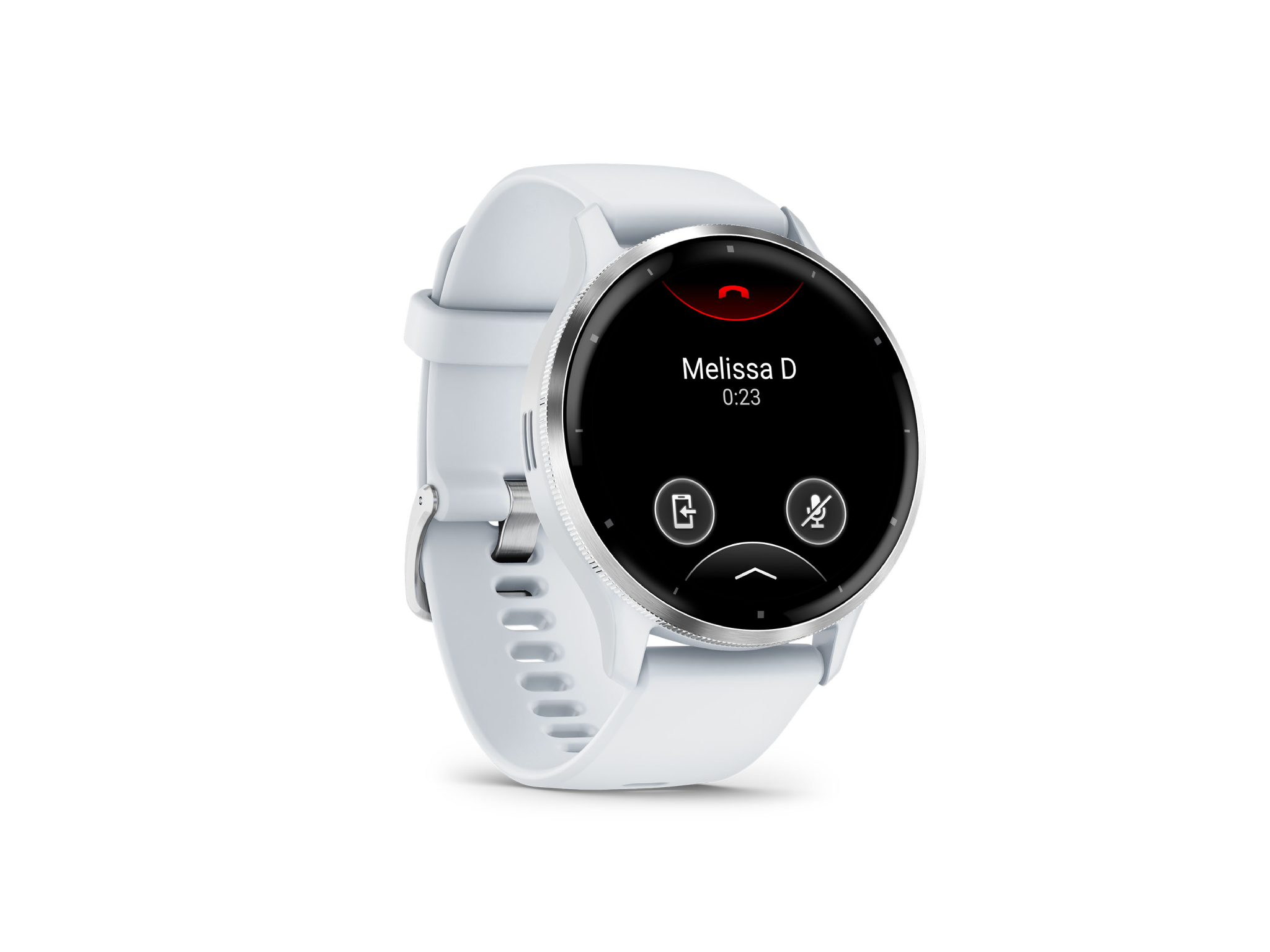
Best: For all-around wellness
Size: 41mm x 41mm x 12mm or 45mm x 45mm x 12mm
Weight: 27g or 30g
Battery life: Up to 14 days
Charging time: 1 to 2 hours
Water resistance: 5 ATM (swimming)
Colors: Black, pink, ivory, gray, sage, white
Heart rate monitor: Yes
Sleep tracker: Yes
Why we love it
- Sleek style
- Can take calls
- Responsive touchscreen
- Long battery life
- Easy to navigate and see favorite stats at a glance
- Comes in smaller 41 mm option
- “Body battery” score offers quick sense of recovery
Take note
- GPS less accurate than forerunner 265
- Not as many in-depth fitness stats as more sports-focused watches
While the utilitarian Garmin forerunner 265 screams “athlete”, the brand’s sleeker (yet same-priced) venu 3 is more of a lifestyle watch. Yet, it still gives you access to Garmin’s top-notch fitness features, including its iconic “body battery” score, which judges your balance of recovery and activity. Unlike the 265, the venu 3 has a speaker and microphone to take calls from your wrist. It also tracks your skin temperature and can take an ECG.
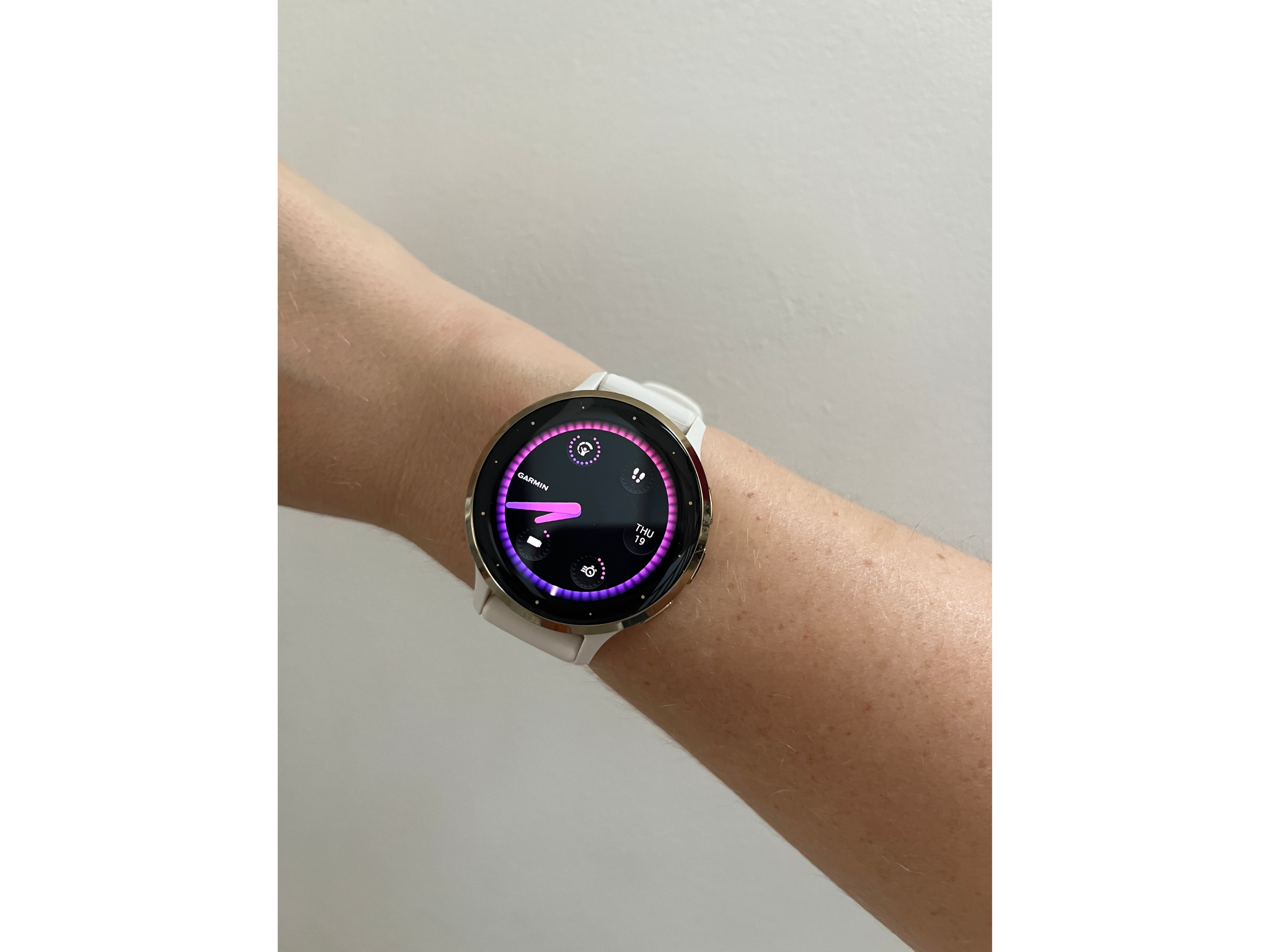
Additionally, I found it does a great job at explaining certain fitness insights, including exactly what you got out of a workout. What I miss, though, are some of the nerdier metrics, such as performance condition and lactate threshold estimates, and the 265’s more robust and accurate GPS system.
That said, if you’re looking for something that will promote all-around wellness and looks good, the venu 3 is a great option.
Buy now £434.00, Amazon.com
What is the best fitness tracker?
For best-in-class fitness features, the Garmin forerunner 265 offers nearly everything you could ask for in a fitness tracker, including all the nerdy stats like VO2 max estimates and training readiness, and one of the best GPS systems around. Plus, it’s comfortable enough to forget about during both activities and sleep. But for beginners on a budget, the Fitbit charge 6 will offer plenty for about a third of the price, with particularly helpful notifications and stats on your overall movement so you can make sure you’re incorporating a healthy amount of activity into your days, whether you log a formal gym session or not.







